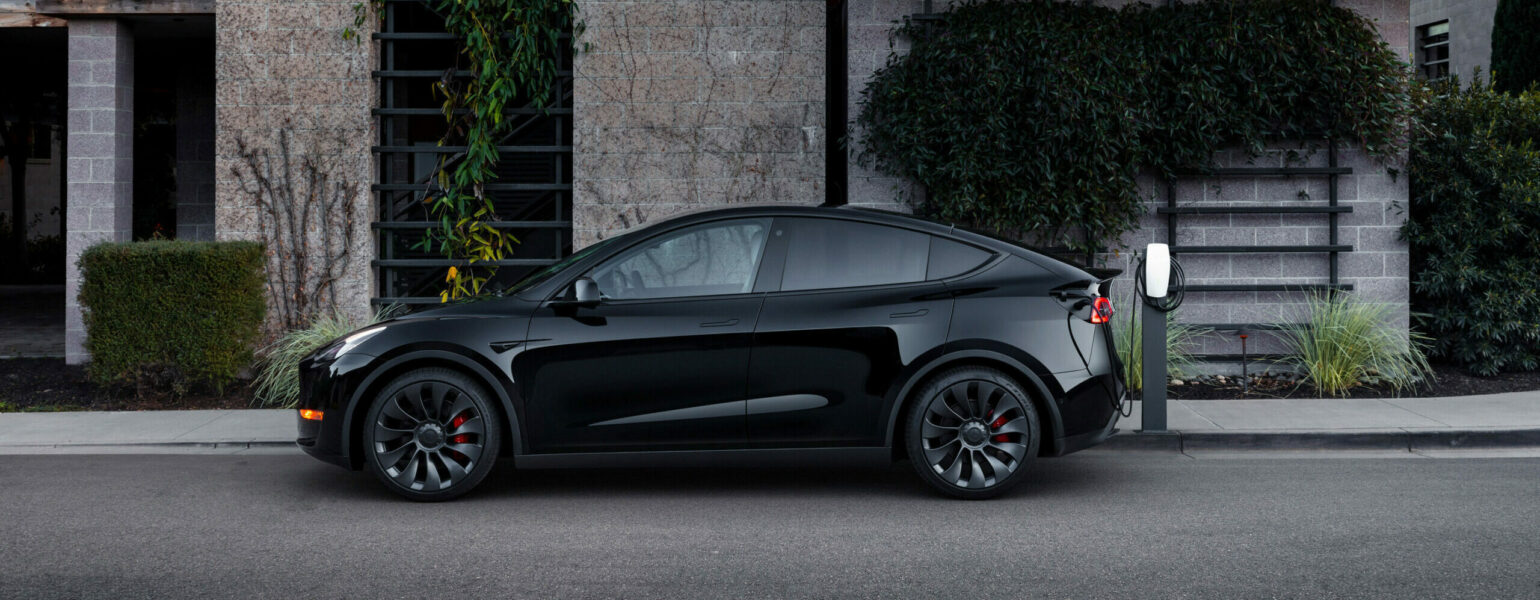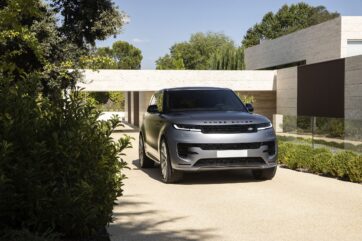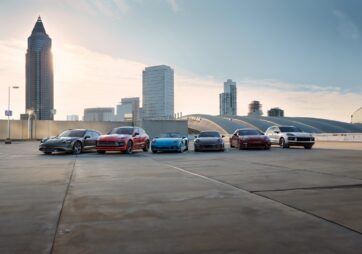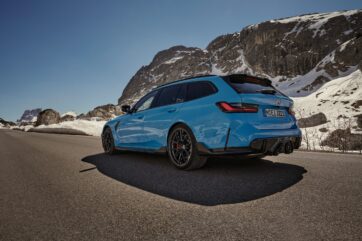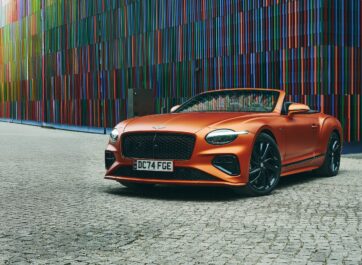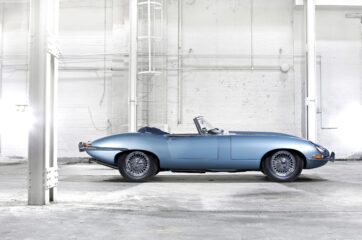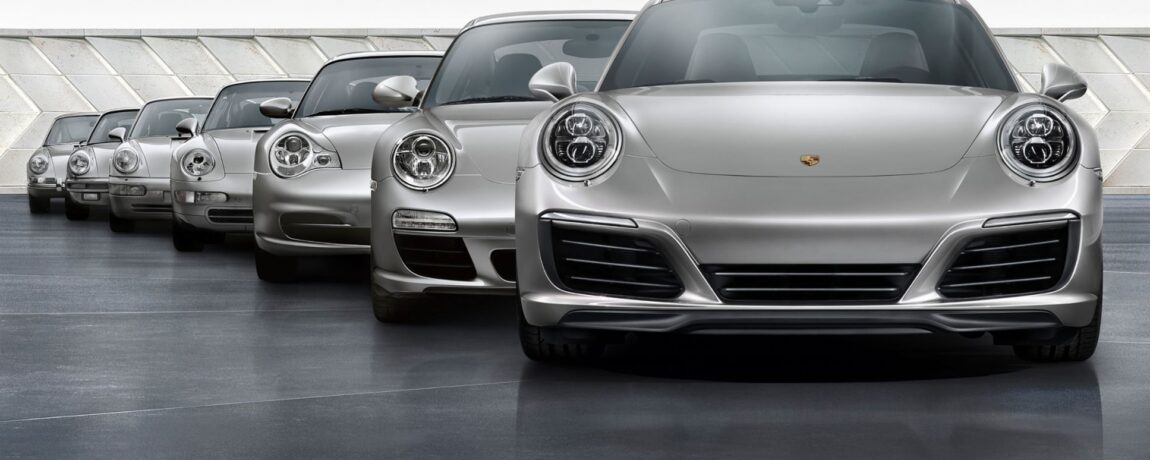
Happy 60th Birthday Porsche 911
Over the years there have been many cars that have stood the test of time when it comes to longevity of a certain model. Icons such as the Mini, the Beetle, the Range Rover, and the Fiat 500 are all cars that come to mind, but their latest incarnations resemble little of the original version. If any model that has stood the test of time that retains the styling cues and format of the original, it would be the Porsche 911.
First shown on the 12th of September at the 1963 Frankfurt Motor Show, the recipe for a 911 has changed little to the original car. Still with the engine at the rear, still with that familiar silhouette, still sporting the iconic round headlights at the front (despite a close call with the 996 generation) and still offering the same mix of speed and handling but with everyday usability that 911 fans champion so much. So in its 60th year since the initial unveiling, how has the Porsche 911 shaped up over the past 6 decades? Here is our rundown of the model’s illustrious and extensive history:
The 901
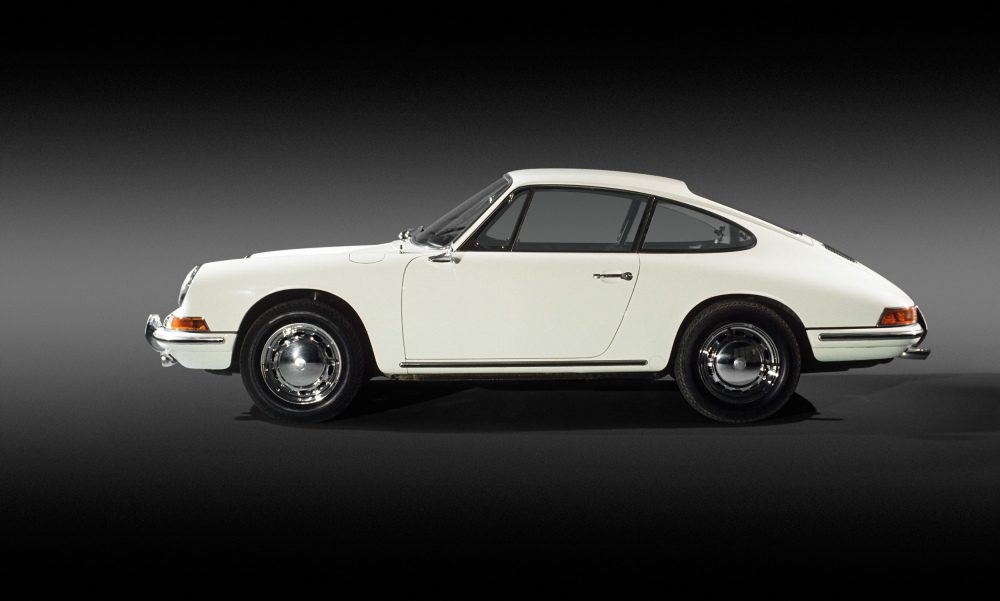
Originally launched to the world as a 901, it was only a challenge by Peugeot thanks to their similar model naming that led to the production models switching to the 911 naming. The first car had a 2.0 litre engine and 130bhp, not much by today’s standards but impressive performance for its day. Despite the seemingly low power it was still capable of a 130mph top speed.
2 years later saw the first Targa model, a new type of convertible named after the famous Targa Florio race, and sporting a large rollover hoop for safety reasons after the US market questioned the roll-over protection of convertible cars. The Targa may have been a safety exercise but it became so popular that by the early 1970’s it accounted for 40% of all 911 sales. When the 911 S was introduced in 1966, power was increased to 160bhp and sported the famous Fuchs five-leaf wheels for the first time. Then a year later came the first 911 T, an entry-level model with less power and less standard equipment, offering those that couldn’t usually afford a 911 a way into the model.
By 1972, 911 fans were treated to the 911 Carrera RS. Lighter than the sparse 911 T yet sporting a 2.7 litre engine and offering 210bhp, the Carrera RS was a very quick car for its time, and also introduced another 911 iconic feature, the ducktail spoiler. Following on from this was the 911 RSR, a homologation special and the beginning of the 911’s illustrious race winning motorsport heritage.
The G Series
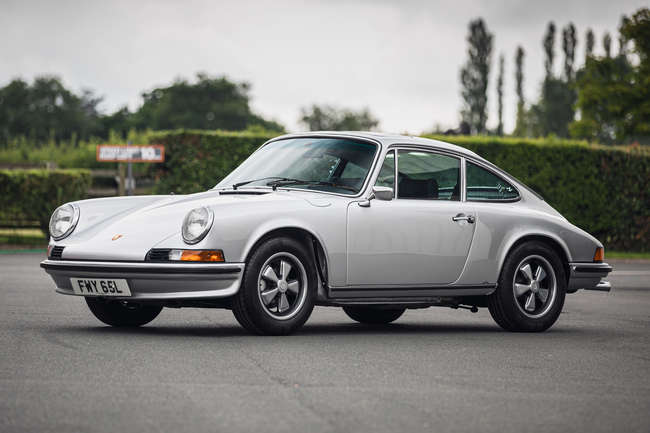
10 years after the launch of the original 911, Porsche decided a makeover was due and in 1973 introduced the G Series. With safety regulations firmly in their mind, the car came with much larger front and rear bumpers for impact protection, integrated headrests to the seats and three-point seatbelts as standard. It also brought about one of the most iconic models of all a year later with the first 911 Turbo. With a 3.0 litre turbocharged engine, the Turbo produced a very impressive 260bhp, double that of the first 911 model.
Just 3 years later, the car was overhauled again with an updated Turbo, this time with a 3.3 litre engine producing 300bhp and introduced intercooling to the model for the first time. Then in 1978 Porsche slimmed down the range and decided to only offer 2 models, the Turbo and the new SC, or ‘Super Carrera’, with a 3.0 litre engine and up to 200bhp in its final iteration. This also led to the introduction of the first Cabriolet in SC trim, previous models had only been available as a Targa or Coupe and was the first fully convertible model since the 356.
Before the G Series was to be replaced they also brought back another name made famous by the 356, the Speedster. With a lower windscreen and sleeker appearance, the Speedster harked back to the sportier look of the 356 Speedster and was primarily aimed at open top driving for the majority of the time.
During this iteration, competition specific versions of the 911 were given alternative model numbers for the first time and came in the form of the 935 and the 959, with the latter being offered as a race car, a supercar for the road and a showcase of their technological capability.
The 964
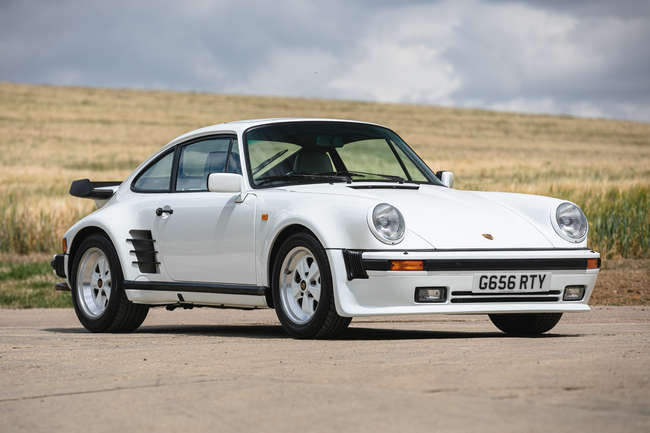
Introduced in 1988, the 964 was a comparatively radical modern looking version of the 911, with softer lines and a more aerodynamic appearance gracing the iconic silhouette. But that wasn’t the biggest alteration, the 964 was only available at launch with four-wheel drive, Porsche’s first mainstream car to feature the technology. Porsche had experience with performance all-wheel drive thanks to their motorsport knowhow and decided this was the way forward for their sports cars. The engine size had grown yet again, now 3.6 litres and producing 250bhp. Underneath, the suspension had been reworked and the car was now offered with a much improved Tiptronic automatic gearbox instead of the earlier clutch-less manual option.
It wasn’t long however before a return to rear-wheel drive followed, as Porsche introduced a rear wheel drive version of the 964 in the Carrera 2, along with a lightweight Carrera RS derivative. The updated 964 Turbo featured a smaller 3.3 litre engine, but thanks to turbocharging was more powerful than the previous iteration. This was eventually replaced by the 3.6 litre Turbo in 1992 and a further increase in power to an impressive 360bhp.
The 993
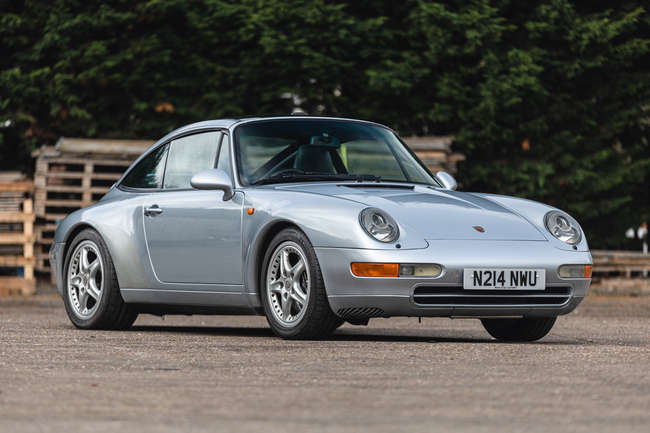
The modernisation of the looks continued just 5 years later in 1993 with the introduction of the 993 generation of 911. Smoother more fluid lines for aerodynamic efficiency and with fully integrated bumpers into the bodywork for the first time, as well as more raked headlights, the 993 was the most streamlined 911 yet. Underneath, the improvements continued with multi-link rear suspension, aluminium construction, and improved handling characteristics proving huge advancements over the 964 generation.
The 993 Turbo appeared 2 years later and offered twin-turbocharging for the first time on a 911, and to keep the increasing power in check, four-wheel drive was standard. Although the engine remained at 3.6 litres, the 993 Turbo produced 408bhp and quicker response thanks to the smaller turbochargers. The Turbo of 1995 also brought about another of Porsche’s iconic badges in the form of the homologation special GT2. Ditching the four-wheel drive to meet regulations, the lightened GT2 sent all 424bhp to the rear wheels and featured wider arches featuring upgraded suspension and a huge fixed rear spoiler with integrated air intakes to feed more air to the engine. It is believed that less than 200 GT2’s were made.
The 996
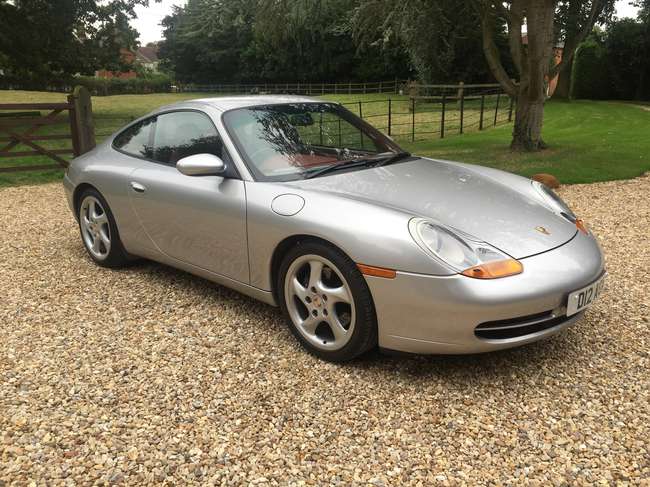
Just 4 years later and Porsche unveiled their most radical and controversial iteration yet, the 996. To enhance the aerodynamics and modern appearance even further, Porsche stepped away from the iconic silhouette more than ever before with some brave decisions. The moulded bumpers were now fully integrated into the shape of the car, the windscreen was angled further back, and they even ditched the iconic round headlights for the now infamous ‘fried egg’ versions.
Not only this but in the 1997 996, water cooling now replaced the air-cooled engines, something that Porsche had kept alive longer than most other manufacturers. For more than 50 years the 911 had used air-cooled engines and had become a feature of the model. Thankfully much to the relief of 911 purists the new engine remained at the rear though, that may have been the final straw otherwise.
2 years later and Porsche introduced the first of arguably their most iconic iteration, the racing inspired GT3. Featuring a hand-built naturally aspirated 3.6 litre engine, the lightened GT3 produced 360bhp and featured parts taken from their racing GT3 Cup car. With a lower ride height, adjustable dampers, firmer springs and reworked anti-roll bars, the GT3 was properly set up to perform on track. Proved when the 996 GT3 became the first production model to lap the fearsome Nürburgring in less than 8 minutes.
The year 2000 saw the return of the flagship model in the 911 range, the GT2. The 3.6 litre turbocharged engine produced over 460bhp and again was rear-wheel drive only and also came without traction control, whilst also being the first full production car to have ceramic composite brakes fitted as standard. The power, light weight and incredible pace of the GT2 is something still revered even today, demonstrating how impressive a spectacle it must have been at the time.
By 2003, just before the 996 was due to be replaced, Porsche introduced the heavily motorsport influenced GT3 RS, said to be the best drivers iteration of the 911 yet. Even lighter than the GT3, whilst sporting the same 380bhp engine (in the latter version) as well as reworked suspension, greater downforce and improved air flow gave even more impressive performance both on the road and on a track.
The 997
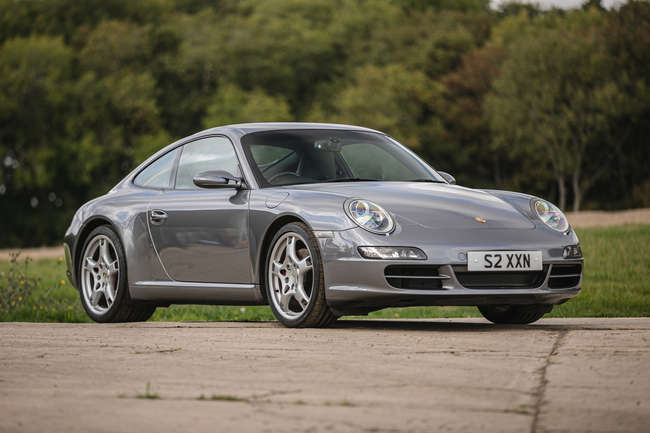
In 2004 Porsche unveiled the 997 version of the 911, and a welcome return to the circular headlights synonymous with the 911 brand. Seen as merely an evolution of the 996 it replaced, the improved headlight design was more than enough to convince Porsche enthusiasts that this model was better. The interior and exterior received updated styling to sharpen up the looks, whilst the car received the first example of the revolutionary PDK double clutch gearbox. This not only improved gear changes but meant that the 997 was lighter, faster and more fuel efficient than the outgoing model.
The 911 range also grew to include more models than ever before with Carrera, Carrera 4, Carrera S, Carrera 4S, Targa, Targa 4, Targa 4S, Cabriolet (in many engine forms), Turbo, Turbo S, GT3, GT3 RS, GT2, GT2 RS and Speedster all available by the time it was replaced. The base Carrera stuck with a 3.6 litre engine with 325bhp, whilst the ‘S’ models came with a 3.8 litre engine with 360bhp. Initially the GT3 and GT3 RS models also stuck with the 3.6 litre engine, yet power was up to 409bhp for the GT3 and 444bhp for the RS, the twin-turbocharged version in the Turbo produced over 470bhp.
At the top of the extremity chart is the GT2 producing 523bhp from the same twin-turbo 3.6 litre engine, the most powerful 911 yet. The increased power and light weight meant that 0-62mph was completed in just 3.6 seconds and the top speed was 204mph, still very impressive statistics even by today’s standards.
Introduced to the range in 2010 for the first time was the 997 Sport Classic. A somewhat ‘greatest hits’ collection of iconic retro 911 features, the Sport Classic remains one of the rarest and most exclusive versions of the 911 ever sold, limited to just 250 examples worldwide. With a modified version of the 3.8 litre Carrera S engine, the Sport Classic featured flat Sport Classic Grey paint, a unique ducktail rear spoiler, Fuchs-style two-tone alloy wheels, a double-bubble roof shape and a Porsche Exclusive interior uniquely retro and bespoke to the car.
By 2011, just before the 997 was due to be replaced, the holy grail amongst Porsche RS products arrived in the shape of the GT3 RS 4.0 litre. Still regarded as one of, if not the very best ‘analogue’ drivers cars that Porsche have ever made, the GT3 RS 4.0 was limited to 600 cars and was all about the driving experience. Power was up to 493bhp, weight was down and downforce was increased thanks to front dive planes at the front to balance out the huge fixed rear wing performance. 0-62mph was disposed of in just 3.5 seconds and top speed was 193 mph but it was the way this car drives and handles that makes it so revered amongst Porsche enthusiasts.
The 991
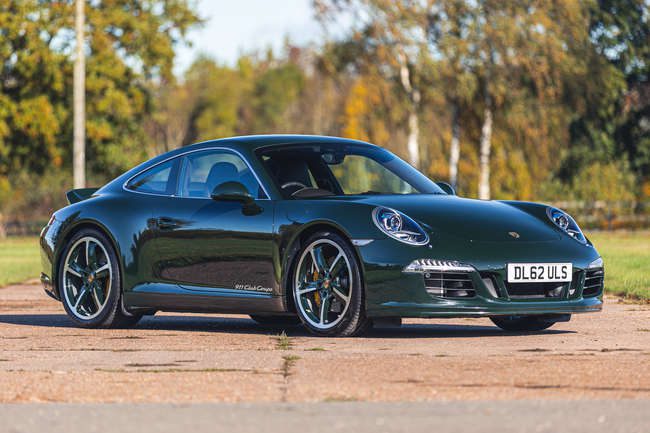
The seventh generation of 911, the 991, was introduced in 2011 and was only the third iteration to receive an all-new platform since the first model was launched. The proportions may have grown but the reconfiguration meant that weight distribution was improved helping handling and cornering performance at the same time. The resulting car was the most comfortable and capable 911 yet and despite the increase in luxury and size, advanced construction and materials meant that the weight of the car was much reduced compared to the previous 997 car.
Adding to the available models of the 997 generation was the introduction of the GTS, sitting between the Carrera S and GT3 models, and featuring an extensive list of options included as standard. Also arriving in limited numbers was the highly sought after 911 R. Based on the GT3 RS, the R does without the fixed rear wing, roll cage or extended bodywork and benefits from a 50kg saving after also removing the air conditioning, audio systems and coming with a lighter flywheel. Limited to a 6-speed manual gearbox, the lower drag coefficient of the R meant a top speed in excess of 200mph. Limited to 991 examples worldwide, the demand for the model meant that many 911 R’s sold for well in excess of their list price for quite some time after launch.
At the top of the ‘regular’ every day models again stands the Turbo S, with a 3.8 litre engine producing 552bhp (compared to the Turbo’s 513bhp), and the 0-62mph time dropping from 3.2 seconds to a very impressive 2.9 seconds. Not to be outdone on power, the 2017 991 GT2 RS came with a massive 690bhp easily making it the most powerful 911 of all time.
The 992
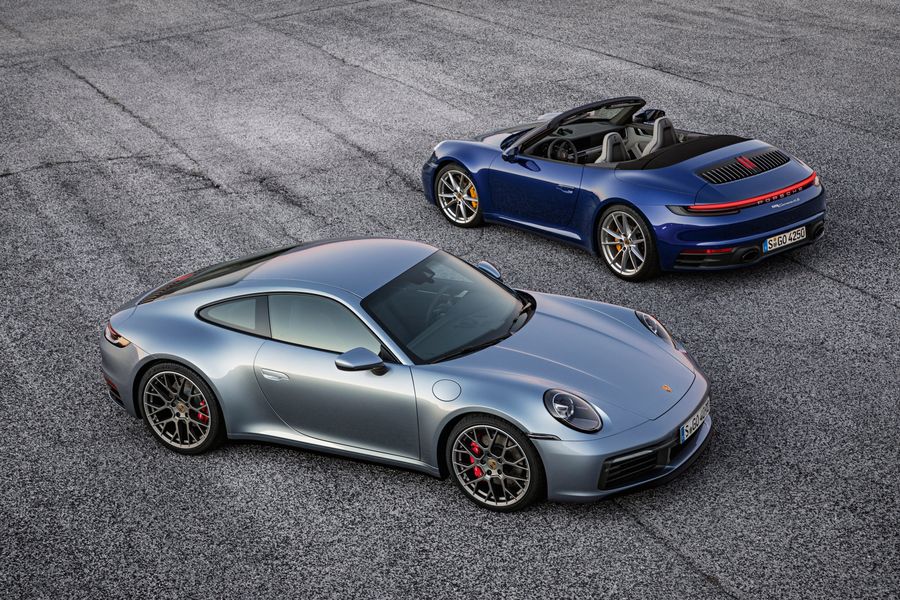
The latest and current version of the 911 is the 992. Produced from 2019 onwards, the 992 featured significant changes to its previous version. Wide arches are now a feature of all models, having previously only been for high performance versions, as well as larger wheels, a wider body, and a host of technological improvements. The styling is said to have drawn inspiration from the original 911 yet reworked in a modern style, even the interior is more like the original’s straight simplistic design. The usual abundance of buttons and switches have mostly been replaced by touchscreens to the centre and as driver instruments, except for the inclusion of an analogue tachometer, again a reference to the classic 911 models.
Turbocharging has been introduced across the range, meaning that the engine sizes have been reduced to 3.0 litres for the majority of the line-up, with 3.7 litre twin-turbocharged engines reserved for the Turbo and Turbo S, and a 4.0 litre naturally aspirated engine for the GT3 and GT3 RS. As you would expect with each new version, the 992 is quicker than its predecessor, more kind to the environment and is more fuel efficient. The base Carrera now produces 380bhp from its turbocharged 3.0 litre engine, almost 3 times the power of the original car, with the Turbo S producing a seriously impressive 641bhp.
The GT3 features the same 4.0 litre flat-six as the 991 Gen II although now it produces 503bhp. The perfect combination of track performance and road going usability means that the GT3 is perfectly usable every day yet has set a lap time on the Nürburgring of under 7 minutes, a whole minute quicker than the 996 GT3. The recently released GT3 RS is the most extreme version yet with more focus on racetrack ability than ever before. With dramatically improved aerodynamic performance the RS produces double the downforce of the GT3 at high speeds and features active aerodynamics as well as a Formula 1 style drag reduction system (DRS).
Also introduced with the 992 is a second generation of Sport Classic, taking most of its inspiration from the 997 version, complete with Sport Classic Grey paint, ducktail spoiler, double bubble roof and Porsche Exclusive interior features. This time however the car is based on the Turbo rather than the Carrera S and limited production is increased 5-fold to 1,250 cars instead of 250.
Despite there being more models than ever before, Porsche have decided to increase the range even further with the introduction of one of their most unique models to date, the 911 Dakar. Taking inspiration from the 1984 911 Carrera 3.2 4×4 raced at the Paris-Dakar rally, the limited run of 2,500 cars features raised suspension, all-wheel drive and their 8-speed PDK gearbox. It also offers optional Rallye Design Package, off road equipment and graphics inspired by the original.
60 Years Later
After 60 years, the Porsche 911 remains at the very top of its game. The design may have changed slightly and the proportions grown over the years, but the silhouette and the ethos of the car remain true to this day. Considering it was once slated to be replaced with the release of the Porsche 928 in 1978, the brand following and passion for the model is as great as it has ever been, and shows no sign of diminishing. While times in the automotive world may be changing and there may be a monumental shift to a different powertrain about to be enforced, the Porsche 911 is certain to be a part of the landscape for many more years to come.
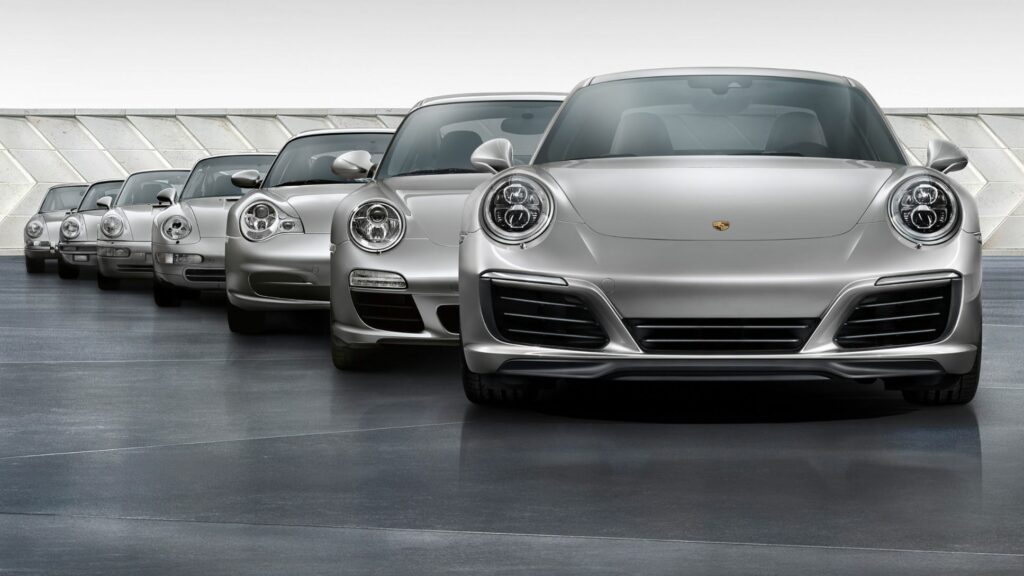
Porsche Finance
At Oracle Car Finance we love a Porsche, that is why we are the official finance partner of Porsche Club GB. Not only that, but we also sourced finance for more Porsche 911’s than any other model of car last year, over 220 were funded in 2022 alone. In fact we sourced funding for more Porsche’s last year than ever before, it was our most popular sports car brand. If you are looking at purchasing your own Porsche 911 or any other Porsche model, our expert team have over 17 years’ experience in sourcing tailored car finance products. Whatever type of car you’re looking for, you can get in touch with us either by calling 0800 012 6666 or click here: Porsche Car Finance.
With over 1,850 Trustpilot reviews, four-time consecutive award winners of the Best Specialist Car Finance Provider award from 2020 through to 2023, and having funded over £1.7 billion of vehicles and counting, you too can find out why thousands of people trust us time and time again to find a smarter, tailored funding solution when looking for your next dream car.
Make sure you follow us on Instagram, LinkedIn and Facebook to keep up to date with what’s happening in the market and to see some stunning photos and videos of the amazing cars we fund.
